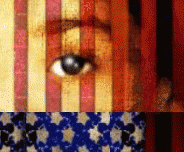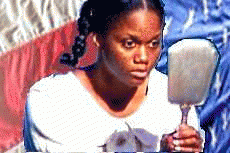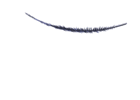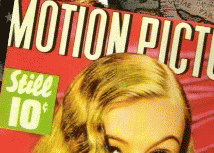The Bluest Eye By Toni Morrison
Annotation:
Claudia MacTeer recalls Lorain, Ohio in the summer of 1941, and the psychological devastation of a young African American girl, Pecola Breedlove, who believed life would be better if she only had blue eyes.
Recommendation:
Toni Morrison is considered by many to be one of the preeminent novelists of our day. Morrison’s novel, The Bluest Eye, is not a book one is ever finished reading. Like all great works of art, the initial encounter with this text mainly conveys the sense that there is more on the page than meets the eye. Just as a great piece of sculpture cannot be absorbed in a single viewing, the first read of Morrison’s novel is only the beginning of a conversation.
The Bluest Eye is a complex work with multiple narratives and perspectives, including the childhood recollections of Claudia MacTeer. At the heart of the saga is the story of young Pecola Breedlove. Pecola nightly prays to have the blue eyes of America’s sweetheart, Shirley Temple -- convinced blue eyes would make her beautiful, and therefore, lovable. Through Claudia’s memories and other accounts of events in Loraine Ohio, circa 1941, we witness Pecola’s self-destruction in a quest for acceptance, self-worth and identity.
This is Morrison's most exciting novel in many respects and for many reasons -- not the least of which is that it is her first born. The author's sheer brilliance and bravery is evidenced on every page. The Bluest Eye is also special because, of all Toni Morrison's fiction works, it is the only one with structural elements, characters and themes that directly engage with the dynamics and developmental markers of adolescence.
"Long hours she sat looking in the mirror, trying to discover the secret of the ugliness, the ugliness that made her ignored or despised at school, by teachers and classmates alike."
 Toni Morrison's text is received in the con-text of the purpose-driven pablum found throughout Fun with Dick and Jane and similar children’s primers. This utilitarian kiddie-lit came into prominence in the 1930s, pushed into popularity by publishers who claimed the primers were a pedagogical necessity. Having remained a staple in American schools and homes well beyond World War II, the repeat and reveal pattern (See Spot. See Spot run.) is so well known, the primer must be regarded as a unique literary genre.
Toni Morrison's text is received in the con-text of the purpose-driven pablum found throughout Fun with Dick and Jane and similar children’s primers. This utilitarian kiddie-lit came into prominence in the 1930s, pushed into popularity by publishers who claimed the primers were a pedagogical necessity. Having remained a staple in American schools and homes well beyond World War II, the repeat and reveal pattern (See Spot. See Spot run.) is so well known, the primer must be regarded as a unique literary genre.
The Bluest Eye is also, in a sense, a “primer” The novel’s fractured focus and multiple perspectives teach you how to read the story as you’re reading.
The Dick and Jane basal readers were authored by William S. Gray and Zerna Sharp, but were clearly patterned after other popular products. The idea behind these books was to combine learning to read with learning about other subjects -- family values, friendships, safety, health etc. -- thereby turning the traditional reading tool into what was essentially a cultural primer.
Toni Morrison was certainly not the first U.S. artist to explore the accidental Dada of the Dick and Jane-style novelino. Many writers noted the cultural homogeneity of these primers and the objectionable social and moral messages children were likely getting when reading between the insipid, repetitious lines. Morrison however, was the first to establish the extent of the psychological damage the Fun with Dick and Jane phenomena potentially provoked.
 All of the characters in The Bluest Eye are influenced and, to some degree, victimized by the images and implied messages of America’s mass media. But beyond the social struggle of measuring up to idealized notions of family-life and relationships as prescribed by Madison Avenue and Hollywood, The Bluest Eye explores the deeper crisis of personal identity formation.
All of the characters in The Bluest Eye are influenced and, to some degree, victimized by the images and implied messages of America’s mass media. But beyond the social struggle of measuring up to idealized notions of family-life and relationships as prescribed by Madison Avenue and Hollywood, The Bluest Eye explores the deeper crisis of personal identity formation.
It’s fascinating to note that Pecola is not a Black child who hates her appearance and simply wishes for the lighter skin and hair that would allow her to pass as a White person. Along with praying to be seen by the world as beautiful and blue-eyed, Pecola desires to view the beautiful world she imagines those with blue eyes must see. She desires to share in the American vision – not just appear to be, but to fully be, an American.
Morrison's unique bildungsroman is experienced through Claudia's look back in time. Morrison's character development strategy prepares us for the devastating sexual violence suffered by Pecola at the hands of her father. What we are not prepared for -- and can never be -- is the shock of recognizing that despite such horror, no one seems to have paid much attention. Pecola drops out of school and out of sight. Seemingly without notice, she disappears into pure imagination. Other than in Claudia’s distant memory, the child, Pecola Breedlove, does not exist.
The Bluest Eye is a brutally honest confrontation with the raw realities of growing up poor and Black in wealthy, White America. Despite dealing with extremely difficult matters of race, gender, familial dysfunction and sociopathy, there is absolutely nothing in this shining work that could be considered harmful to young people or worthy of censorship. Yet, The Bluest Eye has suffered repeated attempts at suppression.
Morrison's novel is exciting precisely because she has found a way around the sensationalism and racialized societal tropes that have confounded America's conversation about race for centuries. Morrison's book was on the vanguard of radical changes in literature. She defied the censors and devised a way to reveal her African American story. It is a uniquely American story, yet it is the kind of story that traditionally, has been outside the scope of mainstream American literature.
While not every young person should or could read The Bluest Eye, one can't help but imagine how differently things would have turned out for 11-year-old Pecola Breedlove had she been given a copy of Toni Morrison's masterpiece.
 Toni Morrison's text is received in the con-text of the purpose-driven pablum found throughout Fun with Dick and Jane and similar children’s primers. This utilitarian kiddie-lit came into prominence in the 1930s, pushed into popularity by publishers who claimed the primers were a pedagogical necessity. Having remained a staple in American schools and homes well beyond World War II, the repeat and reveal pattern (See Spot. See Spot run.) is so well known, the primer must be regarded as a unique literary genre.
Toni Morrison's text is received in the con-text of the purpose-driven pablum found throughout Fun with Dick and Jane and similar children’s primers. This utilitarian kiddie-lit came into prominence in the 1930s, pushed into popularity by publishers who claimed the primers were a pedagogical necessity. Having remained a staple in American schools and homes well beyond World War II, the repeat and reveal pattern (See Spot. See Spot run.) is so well known, the primer must be regarded as a unique literary genre.The Bluest Eye is also, in a sense, a “primer” The novel’s fractured focus and multiple perspectives teach you how to read the story as you’re reading.
The Dick and Jane basal readers were authored by William S. Gray and Zerna Sharp, but were clearly patterned after other popular products. The idea behind these books was to combine learning to read with learning about other subjects -- family values, friendships, safety, health etc. -- thereby turning the traditional reading tool into what was essentially a cultural primer.
Toni Morrison was certainly not the first U.S. artist to explore the accidental Dada of the Dick and Jane-style novelino. Many writers noted the cultural homogeneity of these primers and the objectionable social and moral messages children were likely getting when reading between the insipid, repetitious lines. Morrison however, was the first to establish the extent of the psychological damage the Fun with Dick and Jane phenomena potentially provoked.
"It had occurred to Pecola some time ago that if her eyes, those eyes that held the pictures, and knew the sights - if those eyes of hers were different, that is to say, beautiful, she herself would be different."
 All of the characters in The Bluest Eye are influenced and, to some degree, victimized by the images and implied messages of America’s mass media. But beyond the social struggle of measuring up to idealized notions of family-life and relationships as prescribed by Madison Avenue and Hollywood, The Bluest Eye explores the deeper crisis of personal identity formation.
All of the characters in The Bluest Eye are influenced and, to some degree, victimized by the images and implied messages of America’s mass media. But beyond the social struggle of measuring up to idealized notions of family-life and relationships as prescribed by Madison Avenue and Hollywood, The Bluest Eye explores the deeper crisis of personal identity formation. It’s fascinating to note that Pecola is not a Black child who hates her appearance and simply wishes for the lighter skin and hair that would allow her to pass as a White person. Along with praying to be seen by the world as beautiful and blue-eyed, Pecola desires to view the beautiful world she imagines those with blue eyes must see. She desires to share in the American vision – not just appear to be, but to fully be, an American.
Morrison's unique bildungsroman is experienced through Claudia's look back in time. Morrison's character development strategy prepares us for the devastating sexual violence suffered by Pecola at the hands of her father. What we are not prepared for -- and can never be -- is the shock of recognizing that despite such horror, no one seems to have paid much attention. Pecola drops out of school and out of sight. Seemingly without notice, she disappears into pure imagination. Other than in Claudia’s distant memory, the child, Pecola Breedlove, does not exist.
Morrison's final pages are devastating -- not because of the torment and anguish experienced in the aftermath of the tragedy, but by everyone’s complete and total disconnect with it, including Pecola herself. In our last glimpse of her, Pecola is every bit as chipper and cheerful as a Dick and Jane book. Not unlike the vacuous primers, Pecola’s descent into madness has reduced her to a meaningless, repetitive patter of desire: “Look. Look over there. At that girl. Look at her eyes. Are they bluer than mine? . . . Please. If there is somebody with bluer eyes than mine, then maybe there is somebody with the bluest eyes. The bluest eyes in the whole world.”
"Beauty was not simply something to behold, it was something one could do. The Bluest Eye was my effort to say something about that."
"Beauty was not simply something to behold, it was something one could do. The Bluest Eye was my effort to say something about that."
-- Morrison's Afterword, 1993
The Bluest Eye is a brutally honest confrontation with the raw realities of growing up poor and Black in wealthy, White America. Despite dealing with extremely difficult matters of race, gender, familial dysfunction and sociopathy, there is absolutely nothing in this shining work that could be considered harmful to young people or worthy of censorship. Yet, The Bluest Eye has suffered repeated attempts at suppression.
Morrison's novel is exciting precisely because she has found a way around the sensationalism and racialized societal tropes that have confounded America's conversation about race for centuries. Morrison's book was on the vanguard of radical changes in literature. She defied the censors and devised a way to reveal her African American story. It is a uniquely American story, yet it is the kind of story that traditionally, has been outside the scope of mainstream American literature.
While not every young person should or could read The Bluest Eye, one can't help but imagine how differently things would have turned out for 11-year-old Pecola Breedlove had she been given a copy of Toni Morrison's masterpiece.
Nomination: Yes
Genre Classification: Challenged/Censored, Multicultural, Realistic/Edgy, Historical Fiction
Citation: Morrison, Toni. The Bluest Eye. New York: Plume, 1994. Print.
Toni Morrison biography
The Toni Morrison Society
http://www.tonimorrisonsociety.org/

Words of a Feather
The Woman Warrior
by Maxine Hong Kingston
The Color Purple
by Alice Walker










 12:01 AM
12:01 AM
 Vance Holmes
Vance Holmes



 Posted in:
Posted in: 
